#nobel prize
Text
The Catalan authors who were kept out of the Nobel Literature Prize for being Catalan
Did you know that there have been a handful of Catalan writers who were candidates to win the Nobel Literature Prize, but because of Spanish interference they never did?
The Nobel Prize discloses its debate and reasoning process 50 years after each edition. This means that we already know the details of what happened in the earliest editions of this Prize, which was started in 1901.
The name of the Catalan play-writer Àngel Guimerà (author of Marta of the Lowlands, Mar i cel, La filla del mar...), whose works have been translated to many languages and played all around Europe and the Americas, with many film and opera adaptations, sounded often in the Nobel committee. He was presented as a candidate to win the Nobel Prize 17 times in a row, since 1907 until his death in 1924. In the editions of 1917 and 1919, many were convinced he would win. However, the declassified documents show why he didn't: as written by the man who was then president of the Nobel Committee, Haralg Härne, Guimerà wasn't given the prize "to avoid hurting the national pride of the Spanish". In 1919, Härne writes that the objective of the Nobel Prize is to promote peace and thus to award Guimerà and show support for a minority culture would be to encourage internal conflict (🤦). The Academy decided that they couldn't give a prize to Guimerà "before awarding another writer who expresses himself in the most ancient noble language of the country" (weird way to mean "the official language", aka Spanish, because they surely didn't mean Basque). In summary, if a Catalan is to be considered, he must always be second to a Spanish man. Even when the Catalan is, in the words of the Nobel Academy, "the most eminent writer of our times", he can never be considered an equal, always must be behind.
Àngel Guimerà wrote in the Catalan language, which was discriminated against by Spanish and considered an enemy by the Spanish government and much of Spanish society. Guimerà was a firm defender of the right to use the Catalan language and that nobody should be forced to speak the imperial languages instead of their own, and was involved with the political movement for the rights of Catalan people. For this reason, every time the famous Swedish academy was considering Guimerà, the Spanish Royal Academy of Language (RAE) fought it with all its might. Nowadays, Guimerà's theatre plays continue to move thousands of spectators every year.
The same happened again with the poet Josep Carner. In the 1960s, Josep Carner was on exile, because he was a Catalan poet writing in Catalan and who stood against the fascist dictatorship of Spain, which persecuted the Catalan language and identity. Famous writers from around the world, including T. S. Eliot, François Mauriac, Giuseppe Ungaretti and Roger Caillois, supported Josep Carner's candidacy to win the Nobel, but the Spanish Government did everything possible to obstruct it. We don't know if Carner would have won or not, but he was deprived of even trying because of the Spanish government's hatred of Catalan.
Something similar seems to have happened between the 1970s and 1990s to three other Catalan poets: Salvador Espriu, J. V. Foix, and Miquel Martí i Pol, where they did not get any support from the Spanish authorities, so we don't know how it would have ended up.
Another example of what it means to have a state actively working against you because of bigotry against your cultural group.
Sources: book Det litterära Nobelpriset by the president of the Nobel Committee Kjell Espmarck, Pep Antoni Roig (El Nacional), Joan Lluís-Lluís (El Punt Avui), and Jordi Marrugat (Institut Ramon Llull).
#literatura#arts#història#àngel guimerà#josep carner#literature#books#reading#nobel prize#nobel literature prize#catalanophobia#catalanofòbia#catalan#cultures#writing#human rights#minority languages#1900s#history
57 notes
·
View notes
Text
Almost certainly paywalled, but the lede alone is worth it. :)
2K notes
·
View notes
Text
"Is social media designed to reward people for acting badly?
The answer is clearly yes, given that the reward structure on social media platforms relies on popularity, as indicated by the number of responses – likes and comments – a post receives from other users. Black-box algorithms then further amplify the spread of posts that have attracted attention.
Sharing widely read content, by itself, isn’t a problem. But it becomes a problem when attention-getting, controversial content is prioritized by design. Given the design of social media sites, users form habits to automatically share the most engaging information regardless of its accuracy and potential harm. Offensive statements, attacks on out groups and false news are amplified, and misinformation often spreads further and faster than the truth.
We are two social psychologists and a marketing scholar. Our research, presented at the 2023 Nobel Prize Summit, shows that social media actually has the ability to create user habits to share high-quality content. After a few tweaks to the reward structure of social media platforms, users begin to share information that is accurate and fact-based...
Re-targeting rewards
To investigate the effect of a new reward structure, we gave financial rewards to some users for sharing accurate content and not sharing misinformation. These financial rewards simulated the positive social feedback, such as likes, that users typically receive when they share content on platforms. In essence, we created a new reward structure based on accuracy instead of attention.
As on popular social media platforms, participants in our research learned what got rewarded by sharing information and observing the outcome, without being explicitly informed of the rewards beforehand. This means that the intervention did not change the users’ goals, just their online experiences. After the change in reward structure, participants shared significantly more content that was accurate. More remarkably, users continued to share accurate content even after we removed rewards for accuracy in a subsequent round of testing. These results show that users can be given incentives to share accurate information as a matter of habit.
A different group of users received rewards for sharing misinformation and for not sharing accurate content. Surprisingly, their sharing most resembled that of users who shared news as they normally would, without any financial reward. The striking similarity between these groups reveals that social media platforms encourage users to share attention-getting content that engages others at the expense of accuracy and safety...
Doing right and doing well
Our approach, using the existing rewards on social media to create incentives for accuracy, tackles misinformation spread without significantly disrupting the sites’ business model. This has the additional advantage of altering rewards instead of introducing content restrictions, which are often controversial and costly in financial and human terms.
Implementing our proposed reward system for news sharing carries minimal costs and can be easily integrated into existing platforms. The key idea is to provide users with rewards in the form of social recognition when they share accurate news content. This can be achieved by introducing response buttons to indicate trust and accuracy. By incorporating social recognition for accurate content, algorithms that amplify popular content can leverage crowdsourcing to identify and amplify truthful information.
Both sides of the political aisle now agree that social media has challenges, and our data pinpoints the root of the problem: the design of social media platforms."
And here's the video of one of the scientsts presenting this research at the Nobel Prize Summit!
youtube
-Article via The Conversation, August 1, 2023. Video via the Nobel Prize's official Youtube channel, Nobel Prize, posted May 31, 2023.
#social media#misinformation#social networks#social#algorithm#big tech#technology#enshittification#internet#nobel prize#psychology#behavioral psychology#good news#hope#Youtube#video
453 notes
·
View notes
Text
The Nobel Physics Prize was awarded on Tuesday to three scientists for their work on attoseconds, which are almost unimaginably short periods of time.
Their work using lasers gives scientists a tool to observe and possibly even manipulate electrons, which could spur breakthroughs in fields such as electronics and chemistry, experts told AFP.
Attoseconds are a billionth of a billionth of a second.
To give a little perspective, there are around as many attoseconds in a single second as there have been seconds in the 13.8-billion year history of the universe.
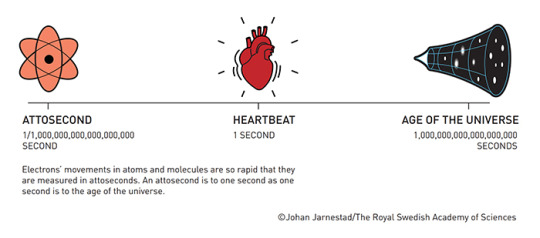
Being able to operate on this timescale is important because these are the speeds at which electrons – key parts of an atom – operate.
For example, it takes electrons 150 attoseconds to go around the nucleus of a hydrogen atom.
This means the study of attoseconds has given scientists access to a fundamental process that was previously out of reach.
Continue Reading
298 notes
·
View notes
Text

MAGA/GQP will await Joe Rogan rebuttal.
323 notes
·
View notes
Text

TIARA ALERT: Crown Princess Victoria of Sweden wore Crown Princess Margaret's Connaught Tiara for the King's Dinner for Nobel Laureates at the Royal Palace in Stockholm on 11 December 2023.
#Tiara Alert#Crown Princess Victoria#Sweden#Swedish Royal Family#tiara#diadem#royal jewels#royaltyedit#Nobel#Nobel Ceremony#Nobel Prize#tiaras#diadems#diamond
169 notes
·
View notes
Photo

Number nobel prize winners in Europe.
by european.atlas
122 notes
·
View notes
Text

Skip your meds and be the next Albert Camus
87 notes
·
View notes
Text
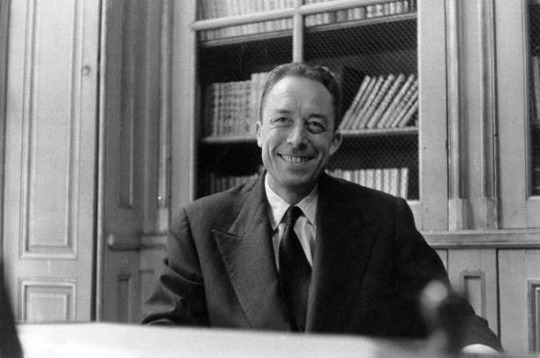

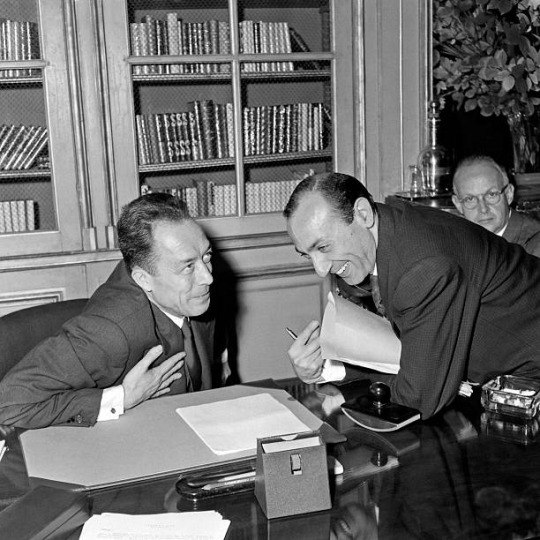

ALBERT CAMUS at the announcement of his winning the Nobel Prize in Literature, on October 17, 1957.
[Picture at the bottom left is Swedish ambassador Rugnar Kumlin announcing the prize to Camus]
74 notes
·
View notes
Text

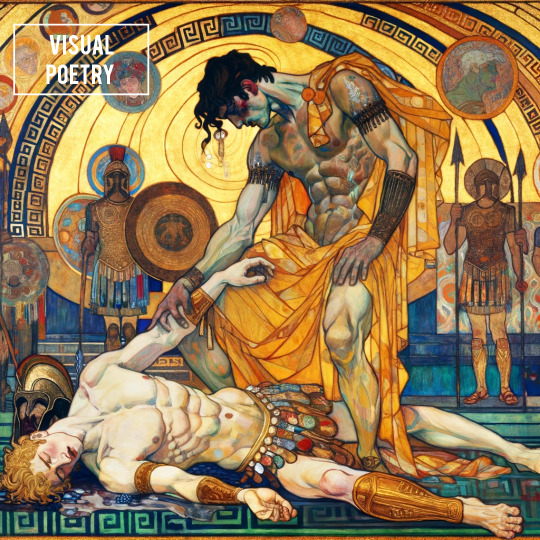
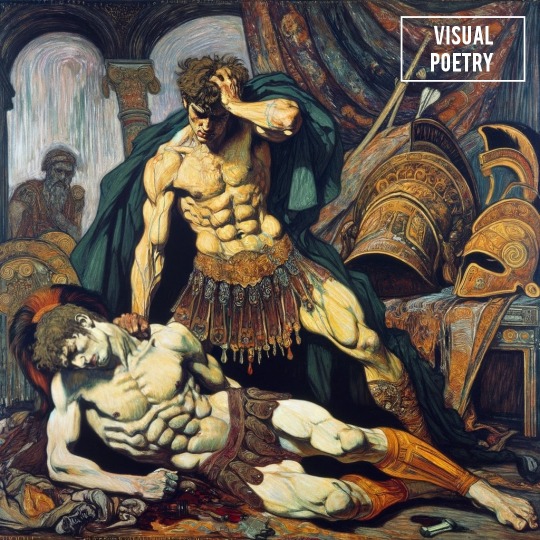
This artwork represents a visual portrayal of the poem "The Triumph of Achilles" by American poet Louise Glück
#male perfection#male physique#gay men#muscle#illustration#male form#handsome#greek gods#male model#ai men#visual poetry#poetry#nobel prize#gay ai#ai art#aimen#ai art gallery#ai muscle#hyper muscle#muscular#artists on tumblr#gayaiart#visual poem#gayart#gayartist#male beauty#visual art#visualization#artistic nude#ai artwork
107 notes
·
View notes
Photo
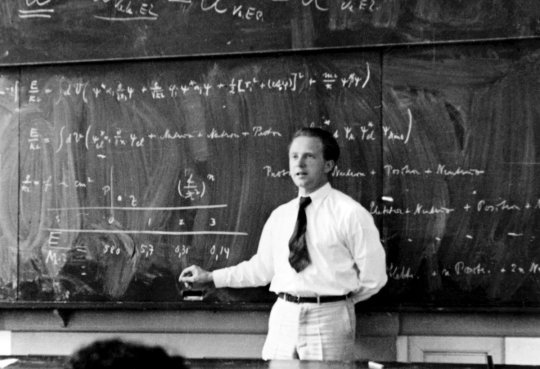
Only a few know, how much one must know to know how little one knows.
- Werner Heisenberg
By 1924, the 23 year old Werner Heisenberg was already a brilliant physicist and so he went to research with Niels Bohr, the director of the Institute of Theoretical Physics at the University of Copenhagen. His paper, “Quantum Theoretical Reinterpretation of Kinematic and Mechanical Relations” was published a year later. After his return to Gottingen, he developed the matrix mechanics formulation of quantum mechanics. He was around 27 years old when in 1927, Heisenberg developed his famed Uncertainty Principal while in Copenhagen. That same year, he became a professor of theoretical physics and head of the physics department at the University of Leipzig. Werner Heisenberg received the Novel Prize in Physics in 1932 for his Uncertainty Principle, though he had been previously nominated in 1928 by Albert Einstein.
#heisenberg#werner heisenberg#quote#quantam mechanics#physics#physicist#nobel prize#uncertainty principle#science#german#knowledge
267 notes
·
View notes
Text


In 1952, these two men, James Watson and Francis Crick, claimed to have discovered the double helical structure of DNA. In 1962, they were awarded the Nobel Prize in Physiology/Medicine.
Unbeknownst to most at the time, they stole their work from female chemist, Rosalind Franklin. These two men are disgusting misogynists. Science teachers of Tumblr, I beg you to stop posting photos of the men who actively suppressed a woman who made one of the greatest scientific discoveries of all time.
#james watson#francis crock#rosalind franklin#nobel prize#dna#science#scienceblr#medicine#chemistry#chem#math#mathematics#1960s
599 notes
·
View notes
Text
"Yeah but where’s my Noble Prize for not letting you know that I’m in love?
#quotes#text#personal#nobel prize#feelings#emotions#love#thoughtful#about love#romantic quotes#love quotes#in love#i deserve an award
65 notes
·
View notes
Text








Royal Floral Arrangements:
Nobel Prize Banquet (2023)
68 notes
·
View notes
Text
Alright strap yourselves in. Quantum mechanics is here is blow your mind and it will not be denied. Now you might think you’re not interested in quantum mechanics, but this isn’t really about quantum mechanics it’s about what to do with our flicker of consciousness and stuff. So an object is considered to be “real” if it exists with definite properties independent of observation. It is “local” according to the principle that objects can only be influenced by their surroundings. One property many particles have is spin, which is measured as “up” or “down”. If you know the spin of a particle and break it into two particles, you know their spins will always complement each other because their sum is known — the particles are entangled. SO GET THIS: You entangle a pair of particles. You separate them. When you measure them, one particle’s spin will ALWAYS be up and the other down, 100% of the time, even when they’re lightyears apart !! You might think that’s just because they inherited these properties when they separated, but their quantum states are random not consistent: you do not know the particle’s spin until you measure it. in fact they do not HAVE a definite state until measured, and are considered to exist in multiple states because of quantum superposition. So as soon as you measure an entangled particle, the other one INSTANTANEOUSLY collapses into the opposite spin. as if telepathically, like it KNOWS. And we know no information could have travelled between the particles because nothing can travel faster than the speed of light. It’s wÈïṞḏ™️
And this observer effect isn’t just some anomalous glitch exclusive to this experiment. When you pass photons one by one through a plate containing two slits onto an observed screen, an interference pattern is created on the screen due to the wave nature of light — the light wave passes through both slits simultaneously and interferes with itself. BUT, if you monitor the photons passing through the slits, they are always found to be passing through either one or the other, and the interference pattern disappears. because it’s only absorbed at the screen at those two discrete points, exhibiting particle, not wave, behaviour. it changes its behaviour based on whether there is detection! So a particle can be described as either a wave or particle before measurement. Wave-particle duality! Where the particles are detected is probabilistic; you can never predict their behaviour for certain. again, quantum superposition.
So anyway by measuring an entangled particle you can somehow influence the quantum state of the other entangled particle, both by collapsing its state and doing so instantaneously. This is bewilderingly uncomfortable right, because it throws everything we know about classical physics out the window. Well it was also uncomfortable to Einstein, who couldn’t accept that quantum mechanics was the full story of reality, and proposed there must be hidden variables that we haven’t yet discovered. But no one could test this theory, UNTIL decades later when John Bell devised an experiment to test for hidden variables. In the years since, this eponymous Bell test — the separated entangled particles experiment with extra detector settings — has been conducted many times and increasingly rigorously. ruling out loopholes. enlarging the distance between entangled particles. And every single time, quantum mechanics proved triumphant. even when a cosmic Bell test was done based on stars hundreds of light years apart! This is what won the Nobel in physics. There are no hidden variables. Particles can be connected, entangled, no matter how far apart they are !¡!
THEREFORE. WHAT DOES THAT MEAN? two things: Objects are NOT only influenced by their surroundings AND objects do NOT have definite properties/states unless measured. Are you hearing this? OBJECTS ARE NOT LOCALLY REAL.
So deeply contrary to our everyday experiences that we didn’t really probe into this realm until like a hundred years ago. It doesn’t affect our everyday lives; we don’t need to know about quantum entanglement to survive or live happy lives, but we still WANT TO KNOW. We still wonder. How fucking phenomenal is that. In love with this relentless pursuit of truth and desire for knowledge unique to our species. Floored by the dedication of these physicists who kept digging at this despite the pessimism and dismissal of hordes of people, despite the it’s-too-hard-so-just-leave-it pressure. We too are just particles that lumped together and evolved into consciousness, but every day we use that consciousness to search for meaning, even when that quest may reinforce our own fragility and futility.
And I wouldn’t trade that for anything in this unreal world.
#quantum mechanics#nobel in physics#physics#quantum physics#consciousness#writing#thoughts#quantum entanglement#particles#how cool is that#nobel prize#phenomenal#science#educational#physics enthusiast#reality#nothingisreal
1K notes
·
View notes
Text

TIARA ALERT: Princess Sofia of Sweden wore her Emerald Palmette Tiara for the Nobel Prize ceremony at Stockholm Concert Hall and banquet at Stockholm City Hall on 10 December 2023.
#Tiara Alert#Princess Sofia#Sweden#Swedish Royal Family#tiara#diadem#royal jewelry#emerald#palmette tiara#royal jewels#tiaras#diadems#royaltyedit#Nobel Ceremony#Nobel#Nobel Prize
149 notes
·
View notes